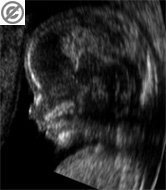Sound
Edited by Jamie (ScienceAid Editor), Taylor (ScienceAid Editor)
Sound Waves
Sound waves are longitudinal waves and can be reflected, refracted and diffracted - like all waves. They are mechanical vibrations of particles that can be detected by the human ear. When a sound wave is reflected, we call it an echo. Echoes of ultrasound are used by bats and sonar, to detect the position of things.
A sound wave can be represented as a sine curve; by altering its amplitude and frequency, we can change the sound.
If the amplitude is increased, the sound becomes louder - a higher volume. If the frequency is increased, you get a higher pitched sound. Humans can only hear sounds that are in a certain range of frequencies. This is generally 20 to 20 000 Hz, but perception of sounds at the upper end are reduced with age. As we age, men lose the higher frequencies, and women lost the lower frequencies of their hearing (Fletcher Munson Curve). Sounds that are above 20 000Hz are said to be ultrasonic.
Ultrasound
Humans can hear within the 20 to 20 000Hz range. Other animals have much higher ranges of hearing. Dogs can hear up to 45 000 Hz, cats up to 64 000Hz and the bat up to 110 000 Hz. Some animals also have ranges of hearing much smaller than humans: the chicken has a range of 125 - 2000Hz.
Ultrasound has many uses, and here we will look at SONAR and medical imaging. Sonar stands for 'sound navigation and ranging'. In it's simplest form, it can be used to calculate the depth of the sea. This is done by emitting an ultrasonic pulse, this bounces off of the sea bed as an echo, and the time taken for it to return is recorded. Using (speed = distance/time) it is possible to calculate the distance, the example below.
Ultrasound is also used in medicine for ultrasound imaging. This works using echoes of ultrasound to create a picture of the inside of the body. It is preferable to other methods because it doesn't result in any radiation that can damage the cells, the way x rays do. Below is an example of an ultrasound image from medical imaging, below is a picture of a fetus.
N.B. sound that is below the range of human hearing is called infrasound. It is the range of frequencies detected by seismographs for detecting earthquakes. These waves can cover long distances with little obstacle.
Referencing this Article
If you need to reference this article in your work, you can copy-paste the following depending on your required format:
APA (American Psychological Association)
Sound. (2017). In ScienceAid. Retrieved Apr 27, 2024, from https://scienceaid.net/physics/waves/sound.html
MLA (Modern Language Association) "Sound." ScienceAid, scienceaid.net/physics/waves/sound.html Accessed 27 Apr 2024.
Chicago / Turabian ScienceAid.net. "Sound." Accessed Apr 27, 2024. https://scienceaid.net/physics/waves/sound.html.
If you have problems with any of the steps in this article, please ask a question for more help, or post in the comments section below.
Comments
Article Info
Categories : Waves
Recent edits by: Jamie (ScienceAid Editor)






